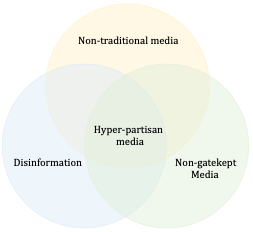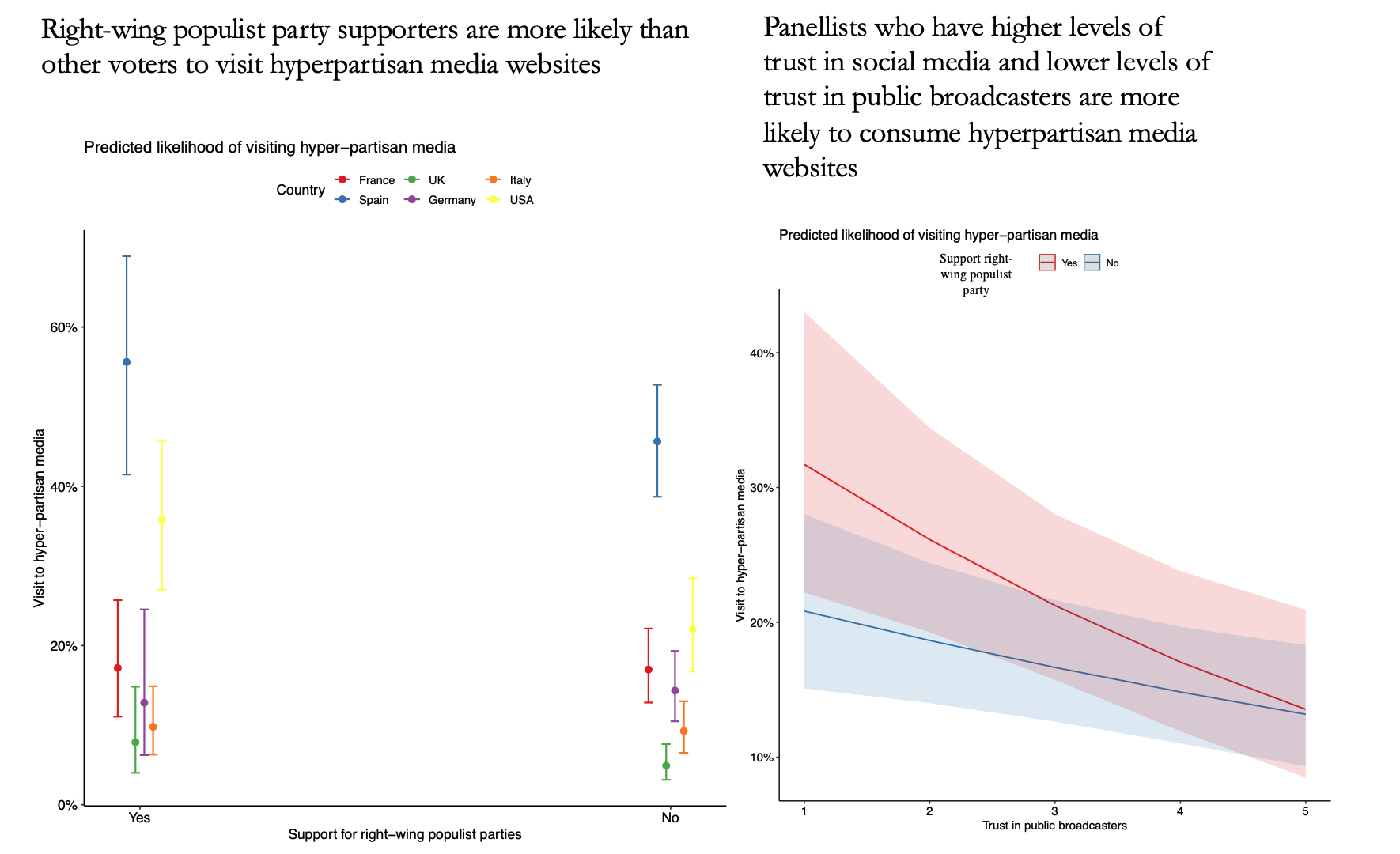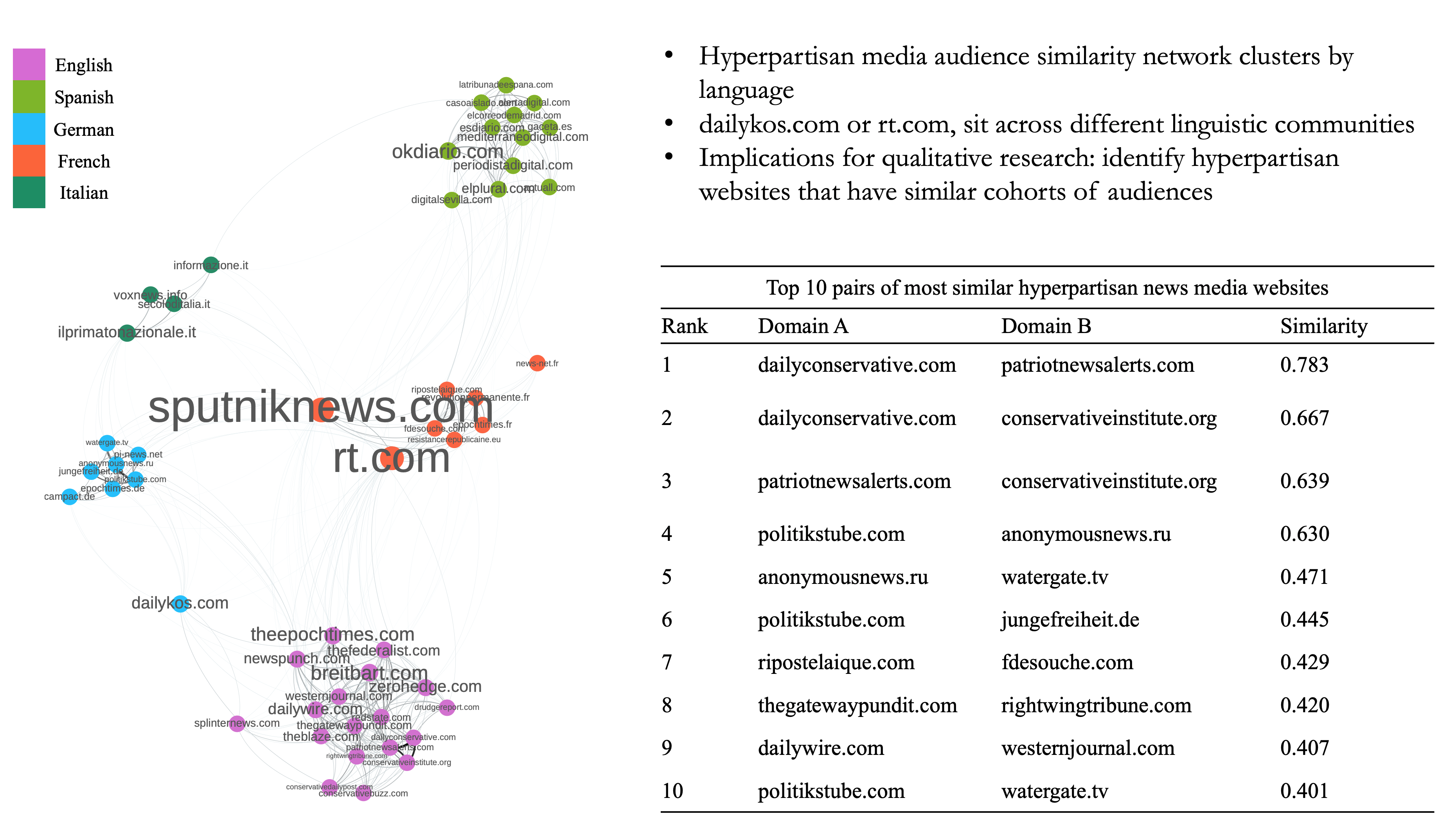The rise of partisan news and populism:
• 23% of panellists visited at least one of the partisan news websites such as Breitbart or The Blaze each week (Digital News Report, 2020)
• Trust in news:
• Declined trust of legacy media among the “very left- or right-wing” voter (Newman et al., 2020)
• The link between populist attitudes and consumption of quality newspaper & public broadcasters (Schulz, 2018, 2019)
• Examine some digital platforms as hyperpartisan news as a starting point to understand anti-media and anti-elite content and sentiments in news (Rea, 2020)
Defining hyperpartisan media:
• Hyper-partisan news: news or political information that falls outside of objective, professional, impartial, independent, diverse, and inclusive media.
• Compared to traditional (“mainstream”) media:
• Appeal not to a broad audiences
• Do not cover a diverse range of topics
• Hyperpartisan media & populism:
• Corrupted elites vs the people (Mudd, 2007)
• Media are seen as part of the political elite/establishment (Fawzi, 2009)

图1
数据来源 Method and Research Questions
Method
• Datasets: Multi-country surveys (attitudinal) & website visits (behavioural) • Six countries: US, UK, Germany, France, Spain, and Italy • Data collected in Spring 2019
Research questions
• Who visits hyperpartisan media sites? • What is the structure of the audience similarity network of hyperpartisan media domains? • What topics are covered in hyperpartisan websites?
Finding #1:
In the regression analysis of hyperpartisan visits, we found that right-wing populist party supporters are more likely than other voters to visit hyperpartisan media websites. Also, Panellists who have higher levels of trust in social media and lower levels of trust in public broadcasters are more likely to consume hyperpartisan media websites. More importantly, the link between distrust in public broadcasters and visits to hyperpartisan media has been reinforced when the panellist support right-wing populist parties.

图2
Finding #2:
We conducted community detection on the network of hyperpartisan domains and found the hyperpartisan media websites are clustered by language. Nevertheless, some websites, such as dailykos.com or rt.com, sit across different linguistic communities. The network visualisation of hyperpartisan media can also inform qualitative researchers, by helping them identify hyperpartisan websites that share similar cohorts of audiences

图3
Finding #3:
Topic modelling analysis of the news titles of hyperpartisan media suggest that hyperpartisan media agenda indeed covers a less diverse social issues. Politics and religion are common themes in the identified topics.

图4
• Triangulation of webtracking dataset with survey dataset
• The link between populist party support and hyperpartisan media visits
• Media trust of public service media and hyperpartisan media visits
• The importance of professional journalism and public broadcasters: Balancing a polarised and partisan media environment
